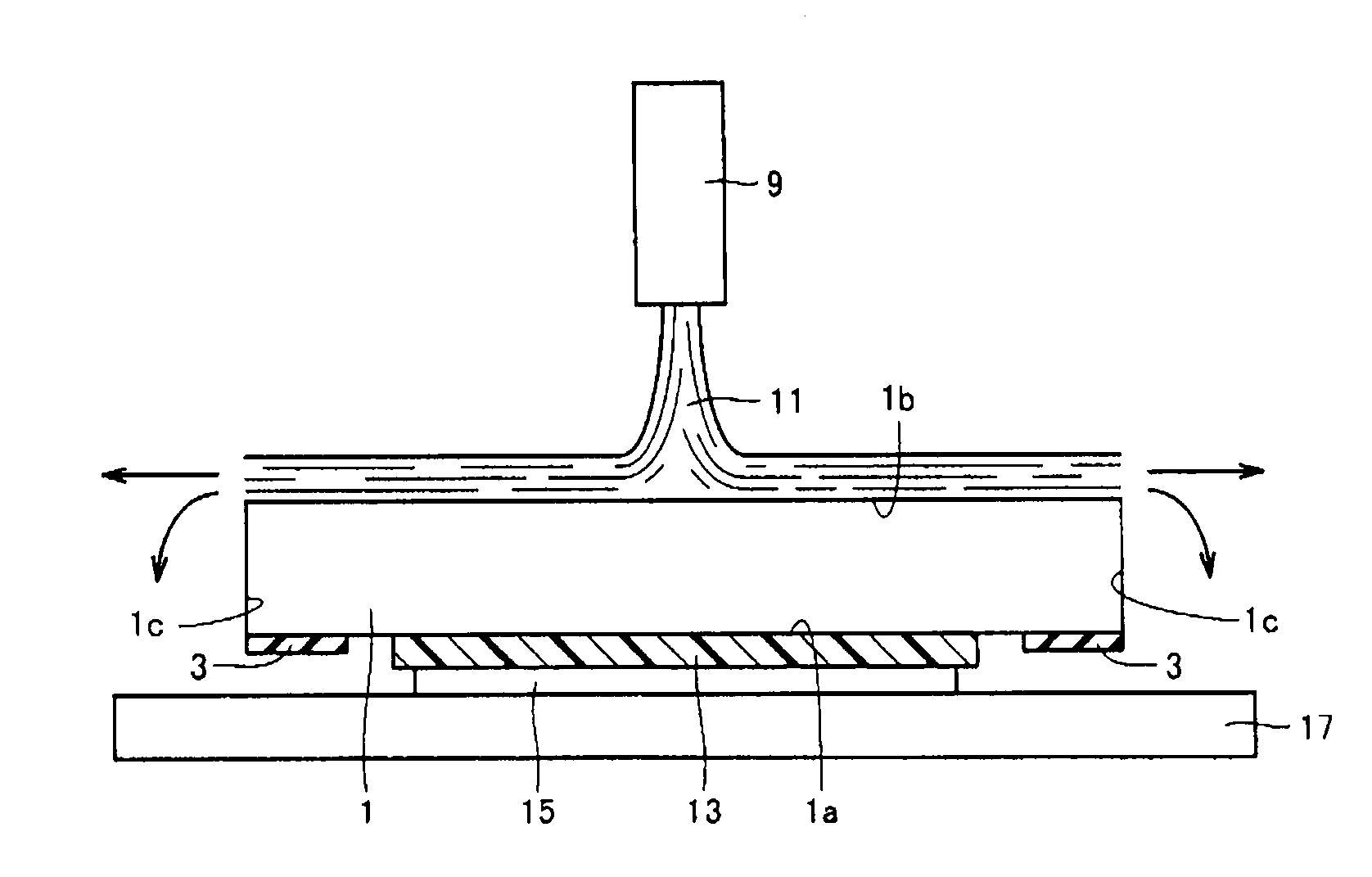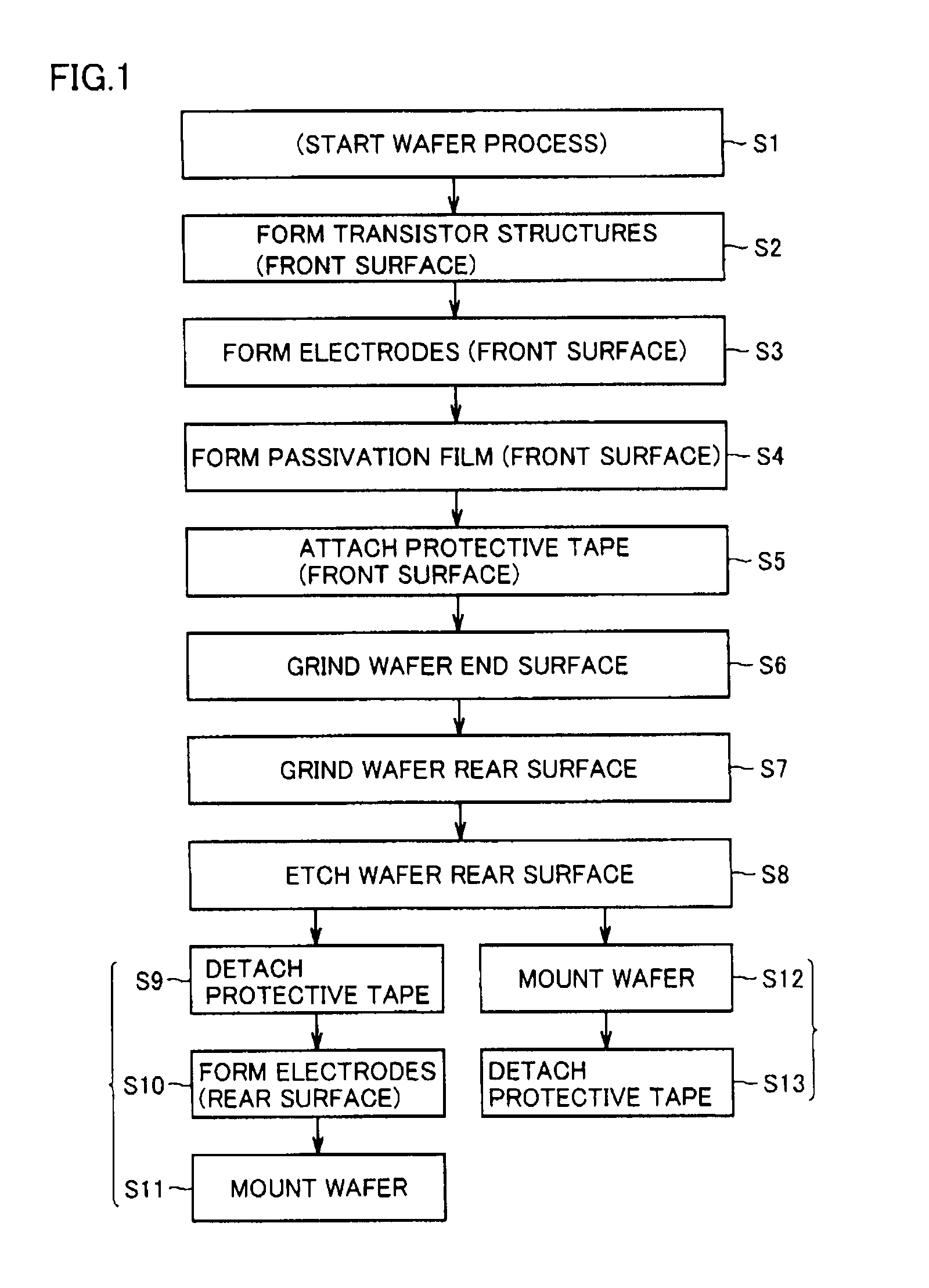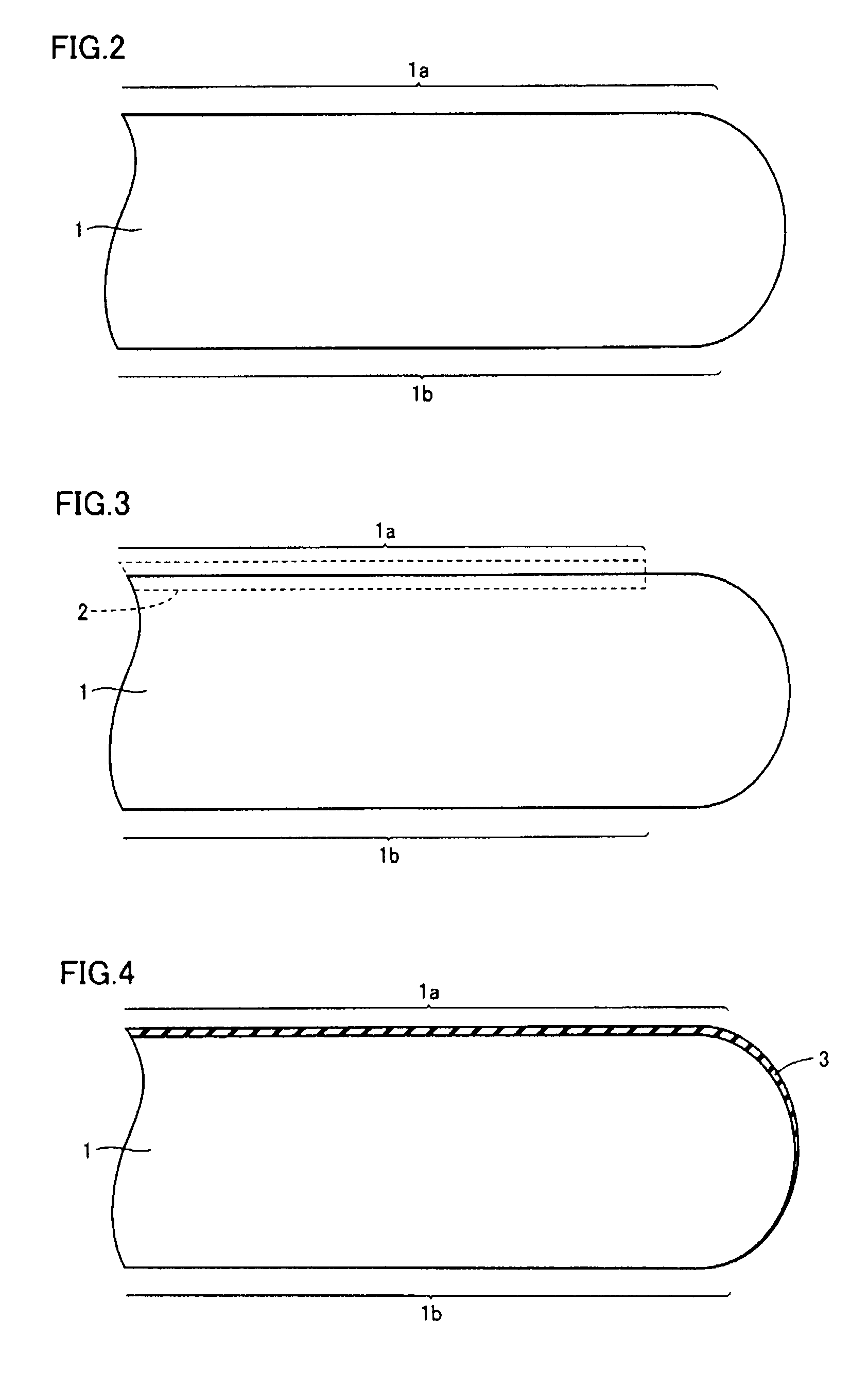Method of manufacturing semiconductor device
a manufacturing method and semiconductor technology, applied in semiconductor devices, solid-state devices, decorative arts, etc., can solve the problems of dispersion of chemical solutions, semiconductor substrate cracking, and dispersion of semiconductor substrates, so as to prevent chipping or cracking of semiconductor substrates.
- Summary
- Abstract
- Description
- Claims
- Application Information
AI Technical Summary
Benefits of technology
Problems solved by technology
Method used
Image
Examples
Embodiment Construction
[0041]A method of manufacturing a semiconductor device in accordance with an embodiment of the present invention will be described. FIG. 1 shows a manufacturing flow of the semiconductor device. As shown in FIG. 1, firstly in step S1, a new semiconductor substrate (wafer) is prepared to start a wafer process. As shown in FIG. 2, at the time of starting a wafer process, an outer peripheral end portion of a semiconductor substrate 1 has a cross section in the shape of a portion of a circle or a portion of an ellipse.
[0042]Next, in step S2, as shown in FIG. 3, insulated gate structures, transistor devices, and the like are formed on a front surface 1a of semiconductor substrate 1 (within a dotted line frame 2) through a predetermined process. Then, in step S3, electrodes are formed in a predetermined region of front surface 1a of semiconductor substrate 1 (within dotted line frame 2). The electrodes are formed, for example, by forming an electrode material such as aluminum on front sur...
PUM
| Property | Measurement | Unit |
|---|---|---|
| thickness | aaaaa | aaaaa |
| thickness | aaaaa | aaaaa |
| thickness | aaaaa | aaaaa |
Abstract
Description
Claims
Application Information
 Login to View More
Login to View More - R&D
- Intellectual Property
- Life Sciences
- Materials
- Tech Scout
- Unparalleled Data Quality
- Higher Quality Content
- 60% Fewer Hallucinations
Browse by: Latest US Patents, China's latest patents, Technical Efficacy Thesaurus, Application Domain, Technology Topic, Popular Technical Reports.
© 2025 PatSnap. All rights reserved.Legal|Privacy policy|Modern Slavery Act Transparency Statement|Sitemap|About US| Contact US: help@patsnap.com



